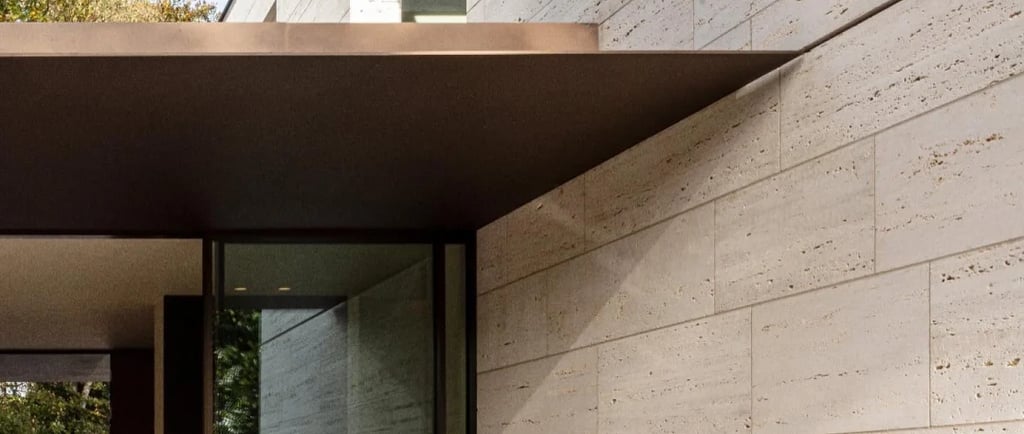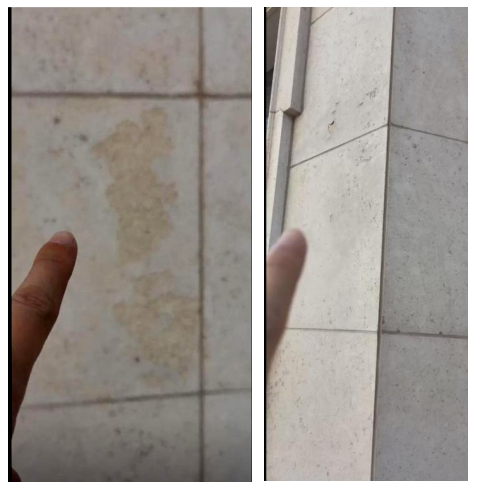Why Marble Cannot Be Used Outdoors?
This is primarily determined by the physical and chemical properties of marble.


Chemical Composition of Marble
Marble mainly consists of carbonate ions (CO₃²⁻), which are highly reactive with sulfur dioxide (SO₂) in the air, forming gypsum (CaSO₄·2H₂O). Gypsum appears as cloudy micro-particles. Calcite in marble is also prone to react with water, forming water-soluble calcium bicarbonate (Ca(HCO₃)₂), which reverts to calcium carbonate (CaCO₃) when water evaporates. These changes cause the polished surface of marble to lose its luster. Calcium carbonate is also susceptible to weathering and corrosion when exposed to carbon dioxide (CO₂), carbides, and moisture in the atmosphere, leading to surface degradation.
Outdoor marble is subject to various environmental factors, including weather and chemical interactions, which accelerate its deterioration.
Effects of Environmental Factors on Marble
Ultraviolet Radiation
Ultraviolet (UV) radiation, with wavelengths ranging from 400nm to 10nm, is a form of electromagnetic wave. Prolonged exposure to UV rays can degrade the surface of marble, causing discoloration and weakening its structure.
Rain and Acid Rain
Marble, being composed of carbonate materials, reacts chemically with rain and acid rain. These reactions alter the surface of the marble, reducing its quality and durability.
Salt
Salt, primarily composed of sodium chloride (NaCl), is generally neutral and non-corrosive in its dry form. However, when dissolved in water, it exhibits weak acidic properties and can become corrosive. In coastal areas, saltwater evaporates and releases salt particles, which can corrode marble surfaces, leading to discoloration and various forms of degradation.
Wind and Temperature
Wind and temperature changes exert physical stress on marble. Strong winds, especially during typhoons, can cause significant impact, potentially cracking or breaking the marble. Temperature fluctuations induce thermal stress, causing marble to expand and contract. Over time, this can lead to fractures and surface damage.
Ice and Snow
Marble has relatively poor resistance to freeze-thaw cycles. In freezing environments below 0°C, ice can expand within the cracks of marble, causing the cracks to widen and the marble to deteriorate further.
Industrial Emissions
Industrial emissions, such as those from steel mills, metal smelters, ceramic kilns, and power plants, release harmful gases into the atmosphere. These gases can chemically react with the surface and interior of marble, causing discoloration and structural changes.
Comparison with Granite and Sinoflexistone
Compared to marble, granite is often described as "everlasting." Granite's primary component is silicate, which is highly stable, acid-resistant, insoluble, weather-resistant, and non-fading. Unlike marble, granite does not react with atmospheric acids to form micro-particles like gypsum that adhere to its surface and cause discoloration.
Sinoflexistone stands out as a durable, anti-oxidative material designed to resist UV radiation, extreme weather conditions, and environmental challenges. It ensures long-lasting performance and aesthetic appeal, making it an ideal choice for outdoor applications.


About Us
As a new brand under HomevipoTech HK, Sinoflexistone is specializing in soft stone production.The state-of-the-art Sinoflexistone factory, strategically located in Zhaoqing City, covers a sprawling area of 120,000 square meters and is repurposed from an existing ceramic manufacturing facility. With plans to establish 12 advanced soft stone production lines, the factory aims to become the largest and most sophisticated soft stone manufacturing base in South China, solidifying Homevipotech’s position as a leader in innovative building materials.
Contact sophie
Any inquiry
info@sinoflexistone.com
+86 18688226660/18928543384
© 2025. All rights reserved.




